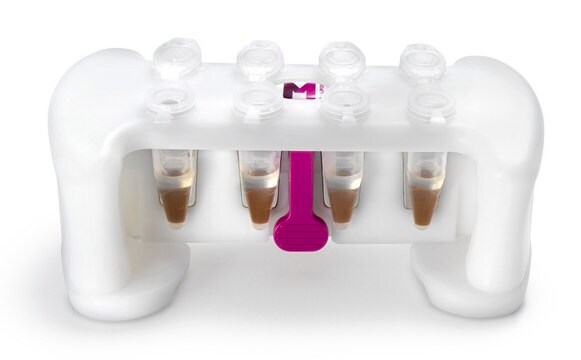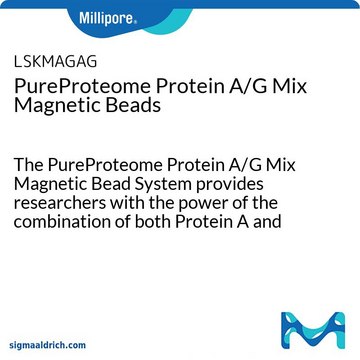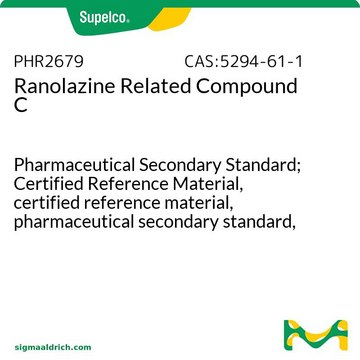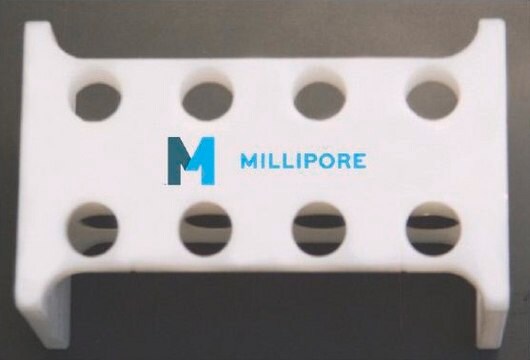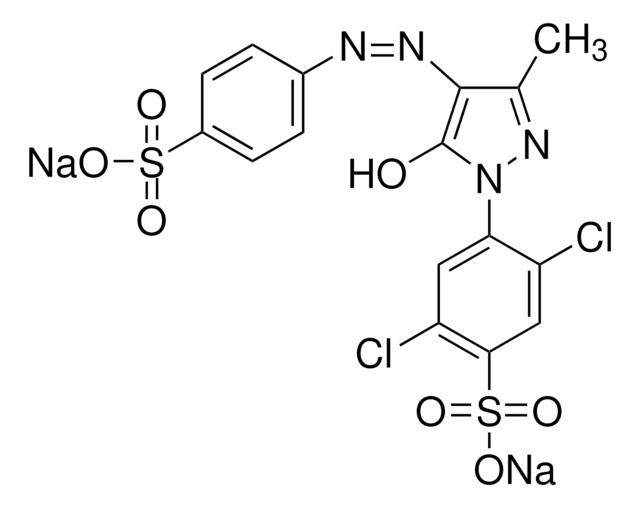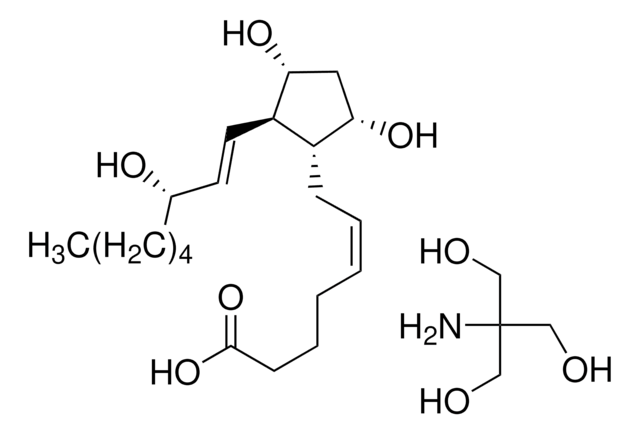17-500M
Catch and Release v2.0 Reversible Immunoprecipitation System
Synonyme(s) :
Catch and release system, Immunoprecipitation kit
About This Item
Produits recommandés
Réactivité de l'espèce (prédite par homologie)
all
Niveau de qualité
Fabricant/nom de marque
Catch And Release
Upstate®
Technique(s)
activity assay: suitable (IP-kinase)
immunoprecipitation (IP): suitable
western blot: suitable
Conditions d'expédition
wet ice
Description générale
Reproducible: eliminates aspiration steps that typically lead to diminished/lost sample
Convenient: spin-column format dramatically simplifies sample handling
Reversible: simple elution of antigen:antibody complex in either native or denatured form
Use:
This kit allows for quick and reproducible immunoprecipitation (IP) by using a spin column. The system is more reproducible than regular IP′s, which are problematic with regards to washing the protein A/G agarose without disrupting the agarose bed. The binding of the antibody/antigen complex in Catch and Release is reversible, and elution of the immune complex can occur with native or denaturing buffers. The system has been tested successfully with rabbit, mouse, sheep and goat antibodies. IP using human IgG1-4 should be suitable. IP using chicken antibodies or human IgA, IgD, IgE or IgM is not recommended with this kit. Please read the enclosed product manual before use.
Application
Conditionnement
Composants
Catch and Release Non-denaturing Elution Buffer, 4X (Cat.# 20-209)
Catch and Release Denaturing Elution Buffer, 1X (Cat.# 20-284)
20-285
20-216
Catch and Release Capture Tubes
Qualité
Stockage et stabilité
Informations légales
Mention d'avertissement
Danger
Mentions de danger
Classification des risques
Aquatic Acute 1 - Aquatic Chronic 1 - Eye Dam. 1 - Repr. 1B - Skin Corr. 1C
Code de la classe de stockage
6.1C - Combustible acute toxic Cat.3 / toxic compounds or compounds which causing chronic effects
Certificats d'analyse (COA)
Recherchez un Certificats d'analyse (COA) en saisissant le numéro de lot du produit. Les numéros de lot figurent sur l'étiquette du produit après les mots "Lot" ou "Batch".
Déjà en possession de ce produit ?
Retrouvez la documentation relative aux produits que vous avez récemment achetés dans la Bibliothèque de documents.
Notre équipe de scientifiques dispose d'une expérience dans tous les secteurs de la recherche, notamment en sciences de la vie, science des matériaux, synthèse chimique, chromatographie, analyse et dans de nombreux autres domaines..
Contacter notre Service technique